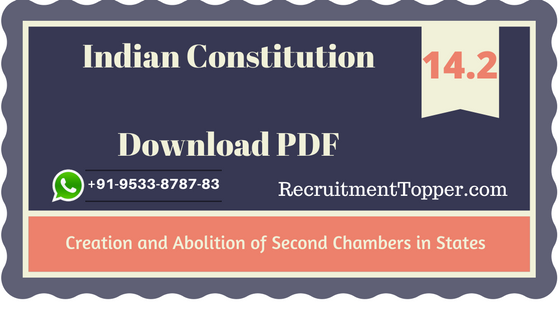Creation and Abolition of Second Chambers in States | Indian Constitution Download PDF
It follows that in the remaining States, the Legislature is uni-cameral, that is, consisting of the Legislative Assembly only [Aft- 168], But the above list is not permanent in the Chambers in sense that the Constitution provides for the abolition of States. the Second Chamber (that is, the Legislative Council) in a State where it exists as well as for the creation of such a Chamber in a State where there is none at present, by a simple procedure which does not involve an amendment of die Constitution. The procedure prescribed is a resolution of the Legislative Assembly of the State concerned passed by a special majority (that is, a majority of the total membership of the Assembly not being less than two-thirds of the members actually present and voting), followed by an Act of Parliament [Art. 169].
This apparently extraordinary provision was made for the States (while there was none corresponding to it for the Union Legislature) in order to meet the criticism, at the time of the making of the Constitution, that some of our States being of poorer resources, could ill afford to have the extravagance of two Chambers. This device was, accordingly, prescribed to enable each State to have a Second Chamber or not according to its own wishes. It is interesting to note that, taking advantage of this provision, the State of Andhra Pradesh, in 1957, created a Legislative Council, leading to the enactment of the Legislative Council Act, 1957, by Parliament. Through the same process, it has been abolished in 1985.
On the other hand, West Bengal and Punjab have abolished their Second Chambers, pursuing the same procedure.

Leave a Reply